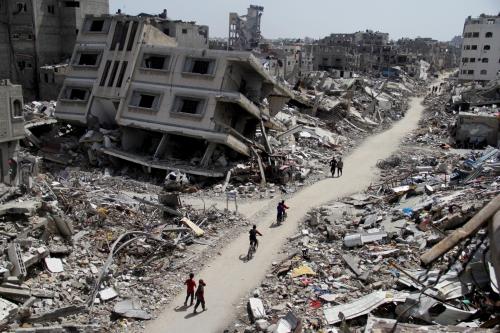By the time I’m writing these lines, Israel—which started vaccinating its population in early December—has already vaccinated over 14 percent of its citizens in just over three weeks. This is an impressive achievement that places it at the top of the list of COVID-19 vaccination efforts, way above richer and larger countries such as the United States and many European nations.
While the current prime minister, Benyamin Netanyahu—running for reelection in March 2021, the fourth election in two years—has made sure to take all the credit for this success (and he definitely deserves some of it) the truth is that there’s more than only his statesmanship, policymaking ability, or personal charm behind this great achievement. After all, if it was only up to Netanyahu’s public health policies, most Israelis wouldn’t be demonstrating regularly against his government’s handling of the pandemic for the past few months, which has been disastrous, to put it mildly.
The first question is how Israel was able to get that many vaccines when supply is short? It is not because—according to reports—Israel paid about $30 per dose, almost double what other nations did. In fact, many countries probably would have been willing to pay even more, especially since almost any price is cheaper than the losses associated with extending the pandemic. In a recent column, Israel Channel 13 journalist Nadav Eyal explained what was really behind Israel’s ability to get an impressive amount of vaccine doses. The answer: Israel is a great pilot country for the pharma companies—small and able to put together a massive vaccination program quickly and effectively. Netanyahu knew it, and the pharma companies did too. This was confirmed, in fact, by the Israeli Minister of Health, Yuli Edelstein, who said in a recent interview that Israel had entered into negotiations with drugmakers as an early bird, given its ability to deliver.
What makes Israel a great pilot country? The answer: its vast public health infrastructure, a public good that has developed through heavy public investment since the creation of the state about 70 years ago. The World Bank’s World Development Indicators show signs of the high levels of public investment in Israel’s health system since the early years of the state. For instance, in 1960, Israel had 2.5 physicians and 6.83 hospital beds for every 1,000 people, compared to less than 1.3 and less than 6, respectively, for countries such as Uruguay, Poland, and Greece, which had similar income per capita levels at the time. Israel at the time also stood out in terms of results: In 1961, Israel had the highest life-expectancy figures for countries with similar incomes. In fact, despite some negative trends in public investment in health in recent years, today Israel spends about 7 percent of its GDP on health and with it is able to achieve remarkable results. Life expectancy at birth for the average Israeli citizen is among the highest in the world, at almost 83 years. This is higher than other richer countries that invest even more in health, such as the United States, which spends nearly 20 percent of its GDP on health services while the average American can expect to live about 78 years. In other words, when it comes to public health, Israel gets more bang for the buck.
One of the products of Israel’s heavy public investment in health since its beginning is its fairly unique public health infrastructure. Israel’s health system relies on four semi-private Health Management Organizations (HMOs) present all over the country (even in smaller and less populated cities and towns) providing health services to every single citizen, insured through social security payroll contributions and an individual mandate. These HMOs, originally founded as health cooperatives, are a legacy of the socialist-oriented ideas and policies that go back to the creation of the state and even before, as do many other things in Israel. The centralized chain of command, which allows all medical facilities in the country—from hospitals to small medical facilities in remote towns—to respond to a national plan designed at the HMOs’ headquarters, is part of the secret to implementing a national public health operation such as massive vaccination quickly and efficiently. For a country of relatively small size (Israel has under 9 million citizens), Israel also has an exemplary single electronic medical record system that includes all of the insured citizens and is shared by all HMOs—making such a vast logistical operation very feasible. Such an interconnected network with presence all over the territory probably wouldn’t exist if it would have responded only to profit and private incentives.
Thus, when it comes to understanding the early success and—perhaps as importantly—the reason why pharma companies trusted Israel in its ability to implement this massive endeavor, it comes down to its public health system, inherited by those in power today. This system includes the exceptional talent and devotion of Israeli health workers who continue to be at the front lines of this pandemic saving lives day and night—as in every other country in the world—but also the legacy of decades of public investment in health care, which other rich countries today should regret not having done.






Commentary
The secret sauce behind Israel’s successful COVID-19 vaccination program
January 5, 2021